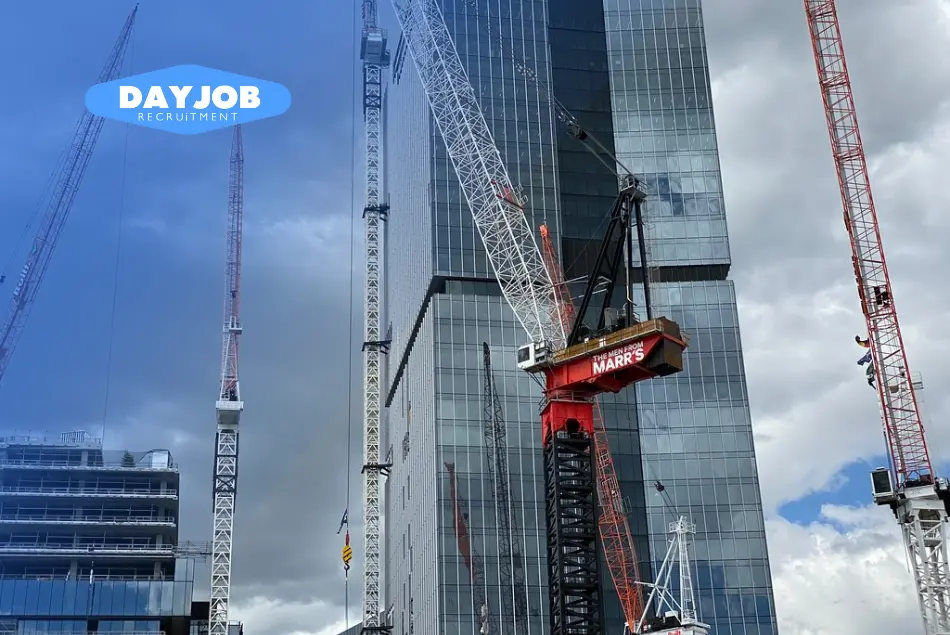The Australian construction industry is on the brink of a transformative era. As we navigate the 21st century, emerging technologies, sustainable practices, and innovative designs are reshaping the architectural landscape of the continent. From eco-friendly buildings to smart infrastructures, Australia is setting new benchmarks in the global construction arena with its building trends.
This blog delves into the latest building trends in the construction industry that are poised to define the future of construction in Australia. Join us as we explore the groundbreaking developments and visionary projects that are propelling Australia to the forefront of architectural excellence. Welcome to the future of construction industry in Australia.
Be Prepared for the Rise of New Technologies
Technology has been one of the most important contributions of mankind to this planet. Admit it; we can’t imagine our lives without the advent of technology, especially in the construction industry. The residential construction sector, in particular, has seen significant technological advancements.
These are among the leading trends in the construction industry, set to revolutionize how projects are approached.

3D Printing
This year, 3D printing is set to revolutionize the construction industry. The residential building market is especially poised to benefit from this technology. It will impact where construction materials are sourced, the sustainability of those materials, and production costs. Investing in the machines that can create the product rather than having to buy the product itself may be a more cost-effective way for construction managers to manufacture supplies.
Prefabrication and Modular Construction
With advancements in technology, prefabricated and modular buildings are gaining popularity in the Australian construction market. These methods allow for faster construction projects, reduced waste, and increased efficiency. Buildings are constructed in sections or modules in a controlled environment and then transported to the construction site.
Augmented Reality (AR) and Virtual Reality (VR)
AR and VR are changing the way architects and construction professionals visualize projects in the Australian construction industry. These technologies allow for immersive walkthroughs of proposed structures, enabling stakeholders in the Australian construction market to get a feel for the space before it’s built.
Drones
Drones are becoming an invaluable tool in industrial construction projects. They can be used for site surveys, monitoring construction project progress, and ensuring that safety standards are met. With the Australian construction market report indicating a rise in drone usage, it’s clear that they provide a bird’s-eye view of the construction site, enabling better planning.

Sustainable Technologies and Environmental Focus
As the world becomes more conscious of its environmental impact, sustainable technologies are becoming a trend in civil engineering construction. This includes the use of renewable energy sources, green building materials, and energy-efficient designs in the Australian construction market.
The Australian construction industry is actively adopting environmentally conscious practices, such as sustainable design, water conservation, and waste reduction. This is in line with Australia’s commitment to reduce greenhouse gas emissions. The focus on sustainability is expected to intensify in 2024.
Digital Twins
A digital twin is a virtual replica of a physical building or infrastructure. It allows construction services to simulate, analyze, and test scenarios in a virtual environment before implementing them in the real world. This can lead to better outcomes and reduced risks in the Australian construction market size.
Robotics and Automation
Robots are being used for tasks such as bricklaying, concrete dispensing, and even structural inspections in infrastructure construction. Automation can lead to faster construction times, increased accuracy, and reduced labor costs in industrial construction.
The construction industry, especially in the Australian construction industry, is undergoing a technological transformation. These building trends highlight the importance of staying updated with the latest technologies to remain competitive and deliver high-quality projects. As the industry continues to evolve, embracing these trends will be crucial for success.
The Era of Innovative Construction: How Emerging Technologies are Reshaping the Industry
In Australia’s vibrant construction landscape, a new era of innovation is unfolding. Groundbreaking technologies like 3D printing, Augmented Reality/Virtual Reality (AR/VR), and modular construction are not just concepts but are being actively employed in various projects across the country. These technologies are revolutionizing traditional construction methods, offering enhanced efficiency, precision, and sustainability. Let’s dive into some of these transformative projects to understand their impact.
3D Printing in Residential Construction:
- Project Example: The XYZ development in Melbourne.
- Technology Overview: Utilization of 3D printing for creating complex architectural elements.
- Impact Analysis: This method has led to a significant reduction in material waste and a 20% decrease in construction time. The precision of 3D printing also enabled intricate designs that were previously impossible or prohibitively expensive with traditional construction methods.
AR/VR in Commercial Development:
- Project Example: The ABC Tower in Sydney.
- Technology Overview: AR/VR was used for virtual walkthroughs and design adjustments before physical construction.
- Impact Analysis: Stakeholders were able to visualize and modify the design in a virtual environment, leading to fewer changes during construction and a more efficient build process. This approach saved approximately 15% in total project costs and reduced the construction timeline by three months.
Modular Construction in Public Infrastructure:
- Project Example: The DEF Public Library in Brisbane.
- Technology Overview: Implementation of modular construction for rapid assembly and reduced on-site work.
- Impact Analysis: The project saw a 25% acceleration in completion time compared to traditional construction. Modular construction also facilitated better quality control and reduced labor costs by 30%, showcasing its efficiency and cost-effectiveness.
These projects are just a glimpse into the potential of emerging technologies in reshaping Australia’s construction industry. They highlight the tangible benefits in terms of sustainability, cost savings, and enhanced design capabilities. As these technologies continue to evolve and become more accessible, they will undoubtedly play a pivotal role in driving the industry toward a more innovative and sustainable future.
Changing Construction Market Building Trends
The construction market in Australia in 2023 is witnessing a blend of challenges and growth prospects.

Overall Market Outlook
- The construction output in Australia is predicted to slow to about 3% in 2023, primarily due to elevated inflation, rising interest rates, and surging construction costs which are affecting residential building and deteriorating property prices.
- Despite these challenges, the market size is expected to grow from USD 163.34 billion in 2023 to USD 213.31 billion by 2028, at a CAGR of 5.48% during the forecast period (2023-2028).
Sector-Specific Trends
- The demand for new construction in sectors like movie theaters, retail buildings, restaurants, and hotels might be dwindling due to factors such as a sustained fall in new building permits which declined by 10.1% in 2022, according to the Australian Bureau of Statistics.
- On a brighter note, there’s a significant government focus on infrastructure development. For instance, the Albanese government allocated AUD 9.6 billion ($6.6 billion) for vital infrastructure projects across the country over the next four years, with over AUD 120 billion ($83.1 billion) allocated for transport infrastructure projects over the next decade.
Industry Challenges
- Supply chain disruptions and labor shortages are among the critical challenges facing the construction industry in Australia in 2023. Moreover, the residential construction sector’s continued weakness is anticipated to affect the growth of the construction industry during this period.
Industry Resilience
- Despite the headwinds, some positives are expected, especially with the minimization of supply chain issues seen in 2022. Technological innovation and a demand for prefabricated construction are driving the industry forward, reflecting an adaptability within the sector.
Company Performance
- A total of 1,236 companies in the construction sector have gone into liquidation, receivership, or administration since July 2022, indicating a challenging environment for construction firms. However, the industry is forecasted to record an average annual growth of 3.1% from 2024 to 2027, hinting at a long-term recovery potential.
The Drive for Women in the Construction Field

Who says women cannot rule the construction industry?!
Currently, only 2% of the population of construction workers are women. The Victorian government is leading Australian policy by taking steps to increase women’s representation in building and construction.
The ‘Building Gender Equality: Victoria’s Women in Construction Strategy 2019-2022’ is overseen by The Building Industry Consultative Council (BICC). The BICC acts as a forum for dialogue between government, employers, industry associations, and unions on significant issues affecting the building and construction industry. The Strategy was developed after extensive research and consultation with people in the construction industry who are eager to contribute to the BICC’s initiative.
Furthermore, the Victorian government plans to continue advancing gender equity in the construction sector through a new initiative, the “Women in Construction Strategy 2023–2031.” This strategy aims to maintain the momentum achieved in the previous 2019-2022 plan, considering the possibility of setting higher employment targets to enhance gender equity within this field
Along with government initiatives, there is a significant push from within the industry to focus on encouraging women to pursue career in building and construction.
Summits like this inspire the confidence of women in the industry, as well as younger women who are considering starting their career path. These panels aim to encourage gender diversity within the industry and create an equal workplace for men and women.
The road to success might be tough sometimes, but take note: There is no road less traveled for a persistent and hardworking person. Economic recovery might be a bit slower than what we are expecting but let us keep moving forward for success and failure will always be at the tip of our fingers! You are your life’s master, choose wisely, work hard rigorously and everything else will follow! More development means more jobs for everyone in Australia! So brace yourselves for a brighter year ahead!
Are you a job seeker looking for your next big opportunity? Click below to see how we can assist you in finding the perfect role.
Conclusion
The Australian construction industry is poised for a transformative journey steered by technological advancements like 3D printing, AR, and modular construction. With a focus on sustainability, gender inclusivity, and government-backed infrastructure projects, the sector, despite short-term challenges, harbors a resilient spirit, hinting at a brighter, innovative, and more inclusive future as it embraces the new waves of change.
Unlock your potential with Dayjob Recruitment! Specializing in manufacturing and construction, we’re your pathway to premier Australian companies. Whether you’re seeking a new role or hiring talent, Dayjob is your innovative workforce solution. Get in touch today!
Is your company ready to find the right talent?








